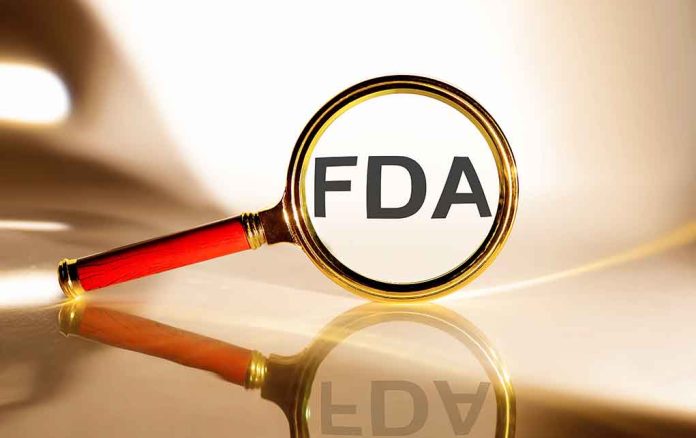
The FDA’s initiative to lower nicotine content in cigarettes could redefine smoking habits in the U.S., but will it succeed?
At a Glance
- The FDA proposes to reduce nicotine content in cigarettes to 0.7 mg per gram.
- The effort aims to reduce smoking rates and improve public health.
- Some critics suggest a rise of black markets could pose a challenge to regulation.
- 12% of Americans may shift to less harmful alternatives or quit.
FDA’s Bold Move
The FDA proposes a new rule to drastically reduce nicotine levels in cigarettes. The proposed nicotine level of 0.7 milligrams per gram of tobacco contrasts sharply with the current average of 17.2 milligrams. This initiative seeks to deter smokers by removing the psychoactive effects of nicotine, intending to decrease smoking rates and improve health outcomes across the nation. It includes cigarette tobacco, pipe tobacco, excluding shisha, and cigars, but excludes premium cigars.
Such a policy was considered during the previous Trump administration, but it reportedly never came to fruition because Scott Gottlieb, FDA Commissioner at the time, resigned. The FDA then moved on to focus on other concerns. Now, with President Joe Biden leaving office, it will be up to the new Trump administration to decide how to proceed with the policy.
FDA moves to cut nicotine from cigarettes, in plan first floated under Trump https://t.co/lRaJoQa45q
— CBS Evening News (@CBSEveningNews) January 15, 2025
Balancing Unintended Consequences
Not everyone thinks the policy is a good idea, however. There are arguments that the initiative could criminalize legal transactions and spawn a surge in illicit trade. Neill Franklin, Law Enforcement Action Partnership’s former executive director, stated, “We know from any number of historical examples that prohibition doesn’t end the demand for these products.” Nonetheless, the FDA evaluates both the benefits and risks, projecting the plan could prevent nearly 48 million Americans from starting to smoke by 2100.
Public health proponents maintain that the initiative presents a noble opportunity to Make America Healthier. Gottlieb once described it as “a tremendous public health opportunity.” Meanwhile, the current FDA Commissioner, Robert Califf, has noted, “If there is a goal to Make America Healthy Again, I can’t imagine anything more important to get done than this,” FDA Commissioner Robert Califf
Legal and Industry Challenges
Tobacco companies anticipated to challenge the rule legally, leveraging industry might to delay or prevent its enforcement. FDA Commissioner Califf noted, “The research has to be airtight to survive the challenges that we know we’ll get in court.” Critics already block funding for nicotine limits.
Despite challenges, the FDA will take public comments for nine months, prior to advancing the initiative further. Industry pushback amounts to a familiar battle since the agency’s authority was established in 2009. The projected benefits, according to Brian King of FDA’s Center for Tobacco Products, are expected to “significantly outweigh any impacts of potential illicit markets.”
Sources
- FDA moves to cut nicotine from cigarettes, in plan first floated under Trump
- The FDA Proposes a De Facto Cigarette Ban, Which Would Expand the Disastrous War on Drugs
- FDA releases plan to make cigarettes less addictive, but its fate rests with Trump













